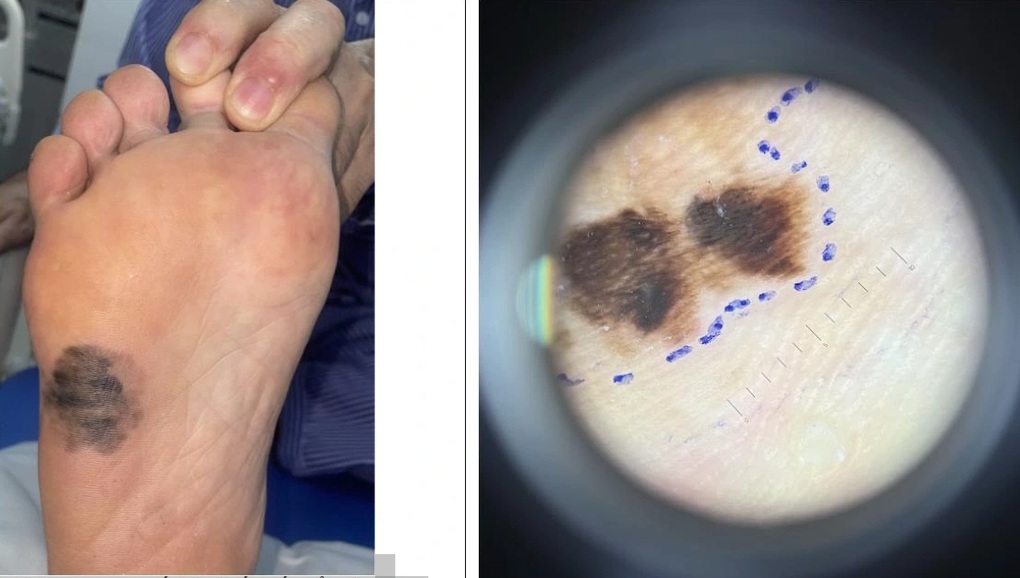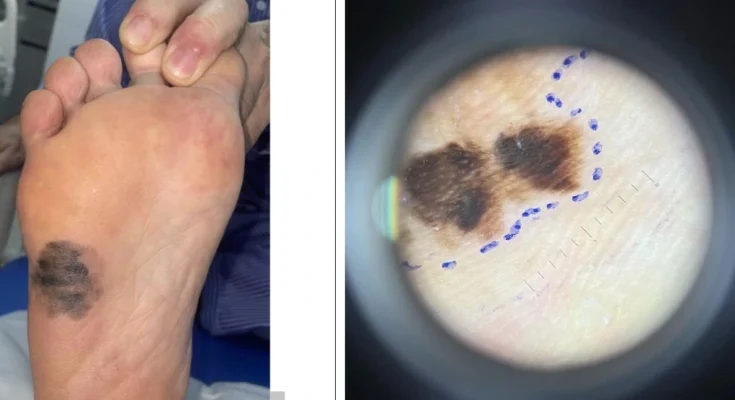The Department of Plastic Surgery, Aesthetic, and Rehabilitation at the Central Dermatology Hospital reported that a 70-year-old male patient recently came to the hospital with a hyperpigmented macule on the sole of his right foot. The lesion was not ulcerated or painful and had appeared 10 years ago.
Over the past year, the black lesion had gradually increased in size, but the patient had not sought any medical attention or treatment. The patient came to the Central Dermatology Hospital after reading an article about melanoma on the foot.

At the Central Dermatology Hospital, doctors found a typical case of melanoma, with an asymmetric lesion, uneven color, irregular borders, no ulceration, and a diameter greater than 3 cm.
The patient was advised to undergo surgery to completely remove the tumor, followed by a histopathological examination to accurately determine the extent of invasion and the stage of the disease. This would guide the appropriate and timely treatment plan to reduce the likelihood of local or distant metastasis of melanoma.
After performing a full biopsy of the lesion, the diagnosis confirmed skin melanoma with Breslow thickness < 0.5 mm, a mitotic rate of 1 mitosis per 5 high-power fields, and no evidence of vascular or nerve invasion.
The patient underwent surgery to remove the melanoma on the sole of his right foot, with an additional 1 cm wide excision, followed by skin grafting for the defect, and sentinel lymph node biopsy.
Seven days post-surgery, the skin graft healed well, and the sentinel lymph node biopsy showed benign inflammation.
“Fortunately, the patient had stage 1A melanoma and did not require adjuvant treatment (such as chemotherapy, radiation therapy, immunotherapy, or targeted therapy). He only needs to be monitored and follow-up regularly for the next 5 years,” said Dr. Vu Nguyen Binh from the Department of Plastic Surgery, Aesthetic, and Rehabilitation at the Central Dermatology Hospital.
Dr. Binh emphasized that if melanoma is detected early and treated according to the correct protocol, the results are very positive, significantly reducing the likelihood of distant metastasis and achieving a high 5-year survival rate.
The early signs of melanoma can vary, and in practice, patients can apply the ABCDE rule to check for abnormal lesions on their skin:
A (Asymmetry): The mole or pigmented spot is asymmetrical. B (Border): The lesion has uneven, jagged, or blurry borders. C (Color): The color is not uniform and may include different shades such as black, brown, or even red or blue. D (Diameter): The diameter is greater than 6 mm. E (Evolving): The lesion changes in size, shape, or color over time.
If any of these characteristics are present, it is essential to visit a specialized hospital for early diagnosis and treatment according to the appropriate protocol.



